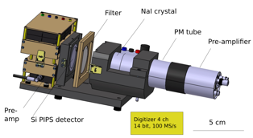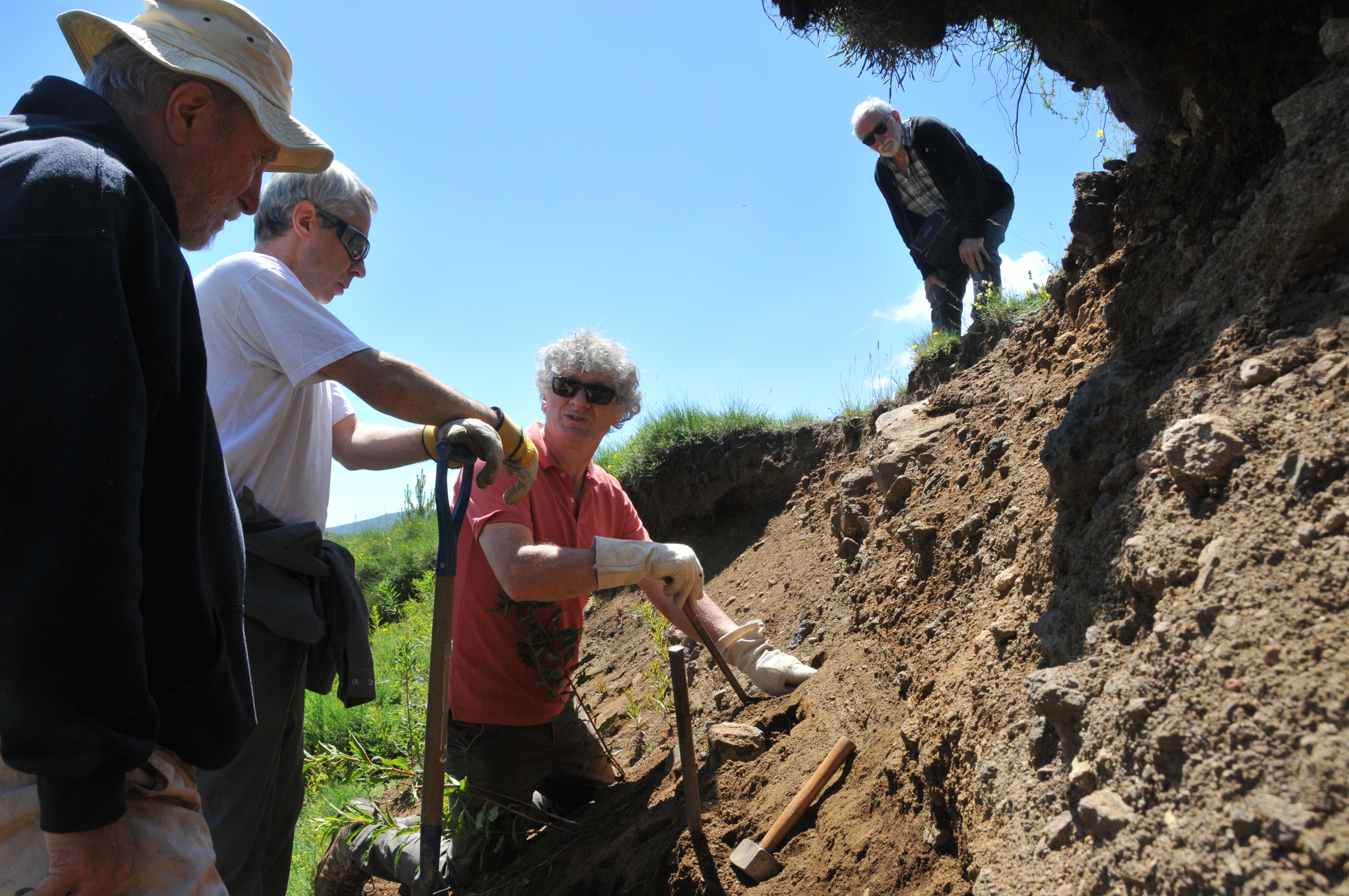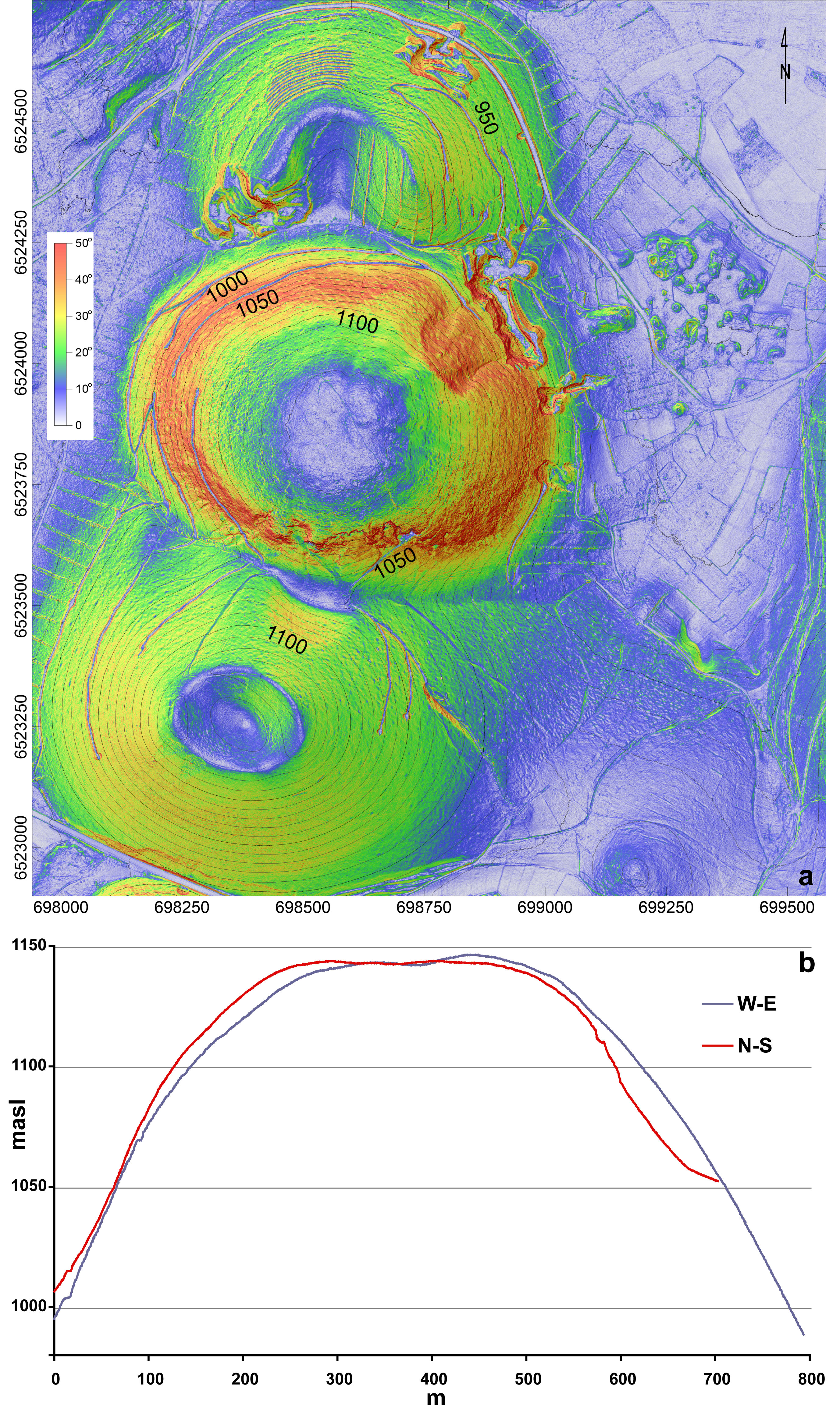Radioactivity & Environment
Life under natural radioactivity
In collaboration locally with Geolab & LMGE (Laboratory Microorganisms Genomics and Environment) laboratories, the team studies life under radiation of natural origin in the framework of the Zone Atelier "Uranium Territories in the Hercynian Arc" (ZATU), labeled since 1st January 2015 by CNRS Institute of Ecology and Environment. ZATU main Long Term Ecological Research observatory is located north-east of the Puy-de-Dôme department, close to Chateldon, Lachaux and Ris cities.
Within ZATU, LPC is at a pivotal point between the partners in charge of the characterization of the environment (quantification of radionuclides and bioavailability) and those in charge of the study of (micro)-organisms. In collaboration with GEOLAB and LMGE, LPC coordinates the TIRAMISU research program dedicated to studying the biodiversity in radioactive mineral springs. The team is also driving the development of Monte Carlo simulation methods to determine the dose delivered to microorganisms under natural radiation, relying on the expertise acquired for 15 years within the GATE, GEANT4 and G4-ADN collaborations (S. Kolovi PhD).
A collaborative work with humanities and social sciences aims at defining human and environmental exposure scenarios, understanding the effects of human action on the distribution of radioactivity in environmental compartments, evaluate the risk (real & perceived) and analyze the patrimonial value of former Uranium mines.
Radiation and volcanoes
Measuring radon emission by active volcanoes
In collaboration with LMV within the framework of the ClerVolc labex, the team is developing instruments to measure radon emission in the plume of open conduit volcanoes to study eruptive dynamics and through the volcanic edifice as a precursor of eruptions. A portable spectrometer was designed and constructed for direct measurement of radon short-lived daughters on active volcanoes (L. Terray PhD).
A network of airborne radon probes was deployed to monitor radon emissions on Etna. Data are continuousy collected and sent to the Environmental Cloud of Clermont-Ferrand data center for display and analysis.

Environmental studies in the field of volcanology
Two techniques for measuring low-level radioactivity are used: Thermoluminescence dosimetry (TL) and gamma spectroscopy.
The current development of TL dosimetry consists in exploring the possibility of using an X-ray electric generator (PAVIRMA facilities on the campus Les Cézeaux, Aubière) as a reference dosing source. This is intended to face the important regulatory requirements which make it more and more difficult to use radionuclides as dosing reference sources, as done until now. TL dosimetry is applied in a twofold approach: (1) with synthetic dosemeters (Al2O3:C) for in situ measurements, (2) with natural minerals (mainly quartz) once zeroed by heat for dating volcanoes.
Gamma spectroscopy is based on a high purity germanium detector (HpGe), either in Marinelli, or alternatively well geometry. Improvements in calibration are obtained by means of modelling the detector in various measuring situations with the Geant4 Monte Carlo method.
The TL technique is applied to dating ancient volcanoes, principally for establishing the chronology of the Chaîne des Puys volcanic field (French Massif Central). Also, the radionuclide contents of specific lavas of the same volcanic field are measured in view to using the variation of this data for characterizing the volcanic edifices and the parent magmas.

The action is fully integrated in a volcanological perspective, in close collaboration with researchers of the laboratory Magmas et Volcans (LMV, UMR 6524 CNRS-UCA-UJM-IRD), and the Institut des Sciences de la Terre of Orléans (ISTO, UMR 7327, Orléans). In this perspective the expertise of the group is extended to field investigation. The current research is particularly focused on the seven trachytic volcanoes which represent the final stage of magma differentiation in the Chaîne des Puys. This action is partially integrated in the Labex CLERVOLC (2010-2020) Program 4, The evolution of volcanic edifices and their plumbing systems: mechanisms and timescales.
A secondary derivative issue of the current research is the reappraisal of the sources of trachyte as a raw material for construction and sculpture during antiquity and the medieval period. This is done in the frame of a PCR (Programme Collectif de Recherche), funded by the French Ministry of Culture.
Measurements of radionuclides of the U and Th series are performed in natural environments in the context of the action Radioactivity and Evolution. These measurements aim at evaluating the radioactivity of water and sediment in a few springs which have been identified as relevant for studying the effects of high levels of radioactivity on the bacterial fauna.
The group is also interested in the radioactivity of volcanic gases, with a particular emphasis on volcanic plumes. In close collaboration with LMV, the group develops methods and instruments for in-situ measurement of radon and radon daughters in diluted volcanic plumes, that are applied to several volcanoes.
Further, the group occasionally applies its skills in radiation measurements for environmental or societal issues such as: radon monitoring in drinking water, in volcanic aquifers, radionuclides assessment in industrial waste, post-accidental radionuclide evaluation, e.g., after the Fukushima event (2011), in collaboration with ATMO Auvergne.


